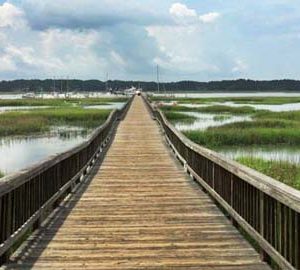Tides vary in type and size.

This can be due to different factors, including the shape of shorelines, ocean basins, and nearby land masses. Tides also vary in size depending on factors such as the moon’s phase and position relative to the earth.
These include:
- diurnal (daily) tides
- semidiurnal (twice daily)
- mixed semidiurnal
- prevailing tidal currents
- spring/neap cycles
- solunar (moon phase) tides
- astronomical tides
- long-period distortion tides
- nonharmonic tidal constituents
Diurnal, Semidiurnal & Mixed:
Diurnal tides are the most common type of tide and occur when there is only one high and low tide per day. Semidiurnal tides occur twice a day with two highs and two lows. Mixed semidiurnal tides have slightly unequal highs and lows that alternate between high and low throughout the day. Prevailing tidal currents consist of continuous or alternating flows of seawater. The gravitational pull of the moon, sun and planets determines the currents.
Spring & Neap:
Spring/neap cycles refer to periods of extreme high tides (spring tide) and milder low tides (neap tide).
Solunar:
Solunar tides are driven by the gravitational pull of the moon. The intensity and frequency of solunar tides varies depending on where they are in relation to the moon’s phase. During a full moon or new moon, when the moon is directly overhead or underneath of Earth, solunar tides can be higher and more frequent than during other phases.
Astronomical Tides:
Astronomical tides are caused by the combined gravitational force of the sun and moon. These tides occur twice daily and are more regular than solunar tides.
King:
A king tide is an especially high tide that occurs when the sun and moon align to create a stronger-than-usual gravitational pull on the oceans. The extremely high tides occur only a few times each year and are most common along coastal areas.
Brown:
Brown tide is an algal bloom caused by the rapid growth of a species called Aureococcus anophagefferens. The brown discoloration of the water gives it its name. It can form massive blooms that cover entire areas of water and make them unsuitable for aquatic life.
Bore:
Bore tides occur when winds push water into narrow bays or channels, causing it to rise quickly like a wall of water. This creates a swell that can race up to 15mph along the shoreline.
Red:
Red tide is a common name for a phenomenon known as an algal bloom (large concentrations of aquatic microorganisms) when it is caused by a few species of dinoflagellates and the bloom takes on a red or brown color. It is also colloquially known as “red tide” because the blooms can discolor coastal waters to various shades of red.
Long-period Distortion:
Long-period distortion tides are caused by the influence of multiple astronomical bodies.
Nonharmonic:
Nonharmonic tidal constituents are fluctuations in sea level due to meteorological and atmospheric pressure changes.
Understanding these different types of tides can help you plan activities that require accuracies, such as fishing or sailing trips. It can also give you an appreciation of the amazing power of nature.




